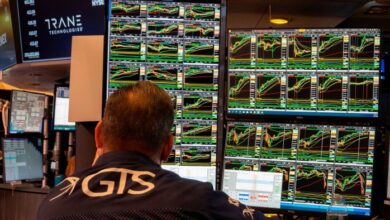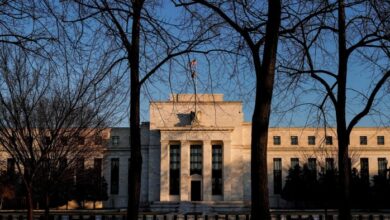China rolls out stimulus to boost growth
Always up to date information for free
Just sign up to Chinese economy myFT Digest — delivered directly to your inbox.
China has rolled out a series of stimulus measures including cutting benchmark interest rates as Beijing grapples with a slowdown in the world’s second-largest economy.
In a rare public press conference on Tuesday, People’s Bank of China also announced government funding to boost the stock market and support share buybacks, as well as more support for the struggling real estate sector.
With economists skeptical about whether China will achieve the government’s full-year growth target of 5%, PBoC governor Pan Gongsheng said, saying the measures were aimed at “supporting the stable growth of the Chinese economy” and “promoting a moderate recovery in prices”.
China’s CSI 300 index listed in Shanghai and Shenzhen rose 3.8 percent on Tuesday following the announcement, putting the index on track for its best day since March 2022. Hong Kong’s Hang Seng index rose 3.9 percent, led by mainland Chinese companies listed in the territory.
Pan said the PBoC would cut the short-term seven-day reverse repo rate, the central bank’s main policy rate, to 1.5% from 1.7%.
The PBoC will also cut the reserve requirement ratio, the amount of reserves that lenders must hold, by 0.5 percentage point, he said, signaling the possibility of another 0.25 to 0.5 percentage point cut this year. He said the RRR cut would inject 1 trillion yuan ($142 billion) of liquidity into the banking system.
“The rare simultaneous cuts in policy rates and RRRs, the relatively large size of the cuts, and the unusual guidance on further policy easing suggest policymakers’ growing concerns about growth headwinds,” Goldman Sachs analysts wrote in a note to clients.
“In our view, this signals a new round of policy easing to support the real economy,” Goldman said, adding: “However, more demand-side easing — particularly fiscal easing — may be needed to improve China’s growth outlook.”
China’s economic growth has slowed in recent months as a prolonged downturn in the property sector has hit consumer sentiment and curbed spending.
Economists have cut their growth forecasts below the government’s official target of around 5 percent for 2024 as deflationary forces persist, with producer prices falling since last year.
Policymakers have turned to exports in hopes that the housing crisis will bottom out, but strong exports of electric vehicles, batteries and other goods have yet to fully compensate for a weaker domestic economy.
“China’s economy is recovering and the monetary policies our bank has introduced this time will help support the real economy, encourage spending and investment, and create a stable foundation for the exchange rate,” Pan said.
The central bank chief was joined by Li Yunze, director of the new financial sector regulator, the State Financial Regulatory Administration, and Wu Qing, chairman of the market watchdog, the China Securities Regulatory Commission.
The government will boost stock market liquidity by allowing brokerages, insurers and funds to tap the central bank’s facilities to buy shares, officials said. The PBoC will also provide re-lending facilities for shareholders to make buybacks.
“A new round of economic stimulus is definitely positive,” said Liu Chang, a macro economist at BNP Paribas Asset Management.
But with economic momentum weak heading into the fourth quarter, officials need to move “very quickly in the coming weeks to implement additional measures if they want to hit the 5 percent target,” Liu said. “In this regard, we think there is still a worrying lack of urgency behind their rhetoric on stimulus measures.”
The PBoC’s cut comes after the U.S. Federal Reserve last week cut its benchmark interest rate by half a percentage point, the first such reduction in more than four years. The Fed’s move narrowed the gap between U.S. rates and those of other major central banks, reducing pressure on foreign currencies and giving institutions, including the PBoC, more room to maneuver.
In other measures, banks have lowered down payment requirements for second homes from 25% to 15%. Second properties are subject to stricter conditions to curb property speculation, which has been a focus of President Xi Jinping.
The PBoC also said it would offer better terms for an inventory clearance program, under which the central bank will provide 300 billion yuan to local government-owned enterprises to help them buy unsold inventory from property developers.
But the central bank stopped short of increasing the amount available under the program, amid signs that struggling to gain traction.
Economists say reducing China’s large housing inventory is crucial to restoring confidence in the economy and boosting domestic consumption.





